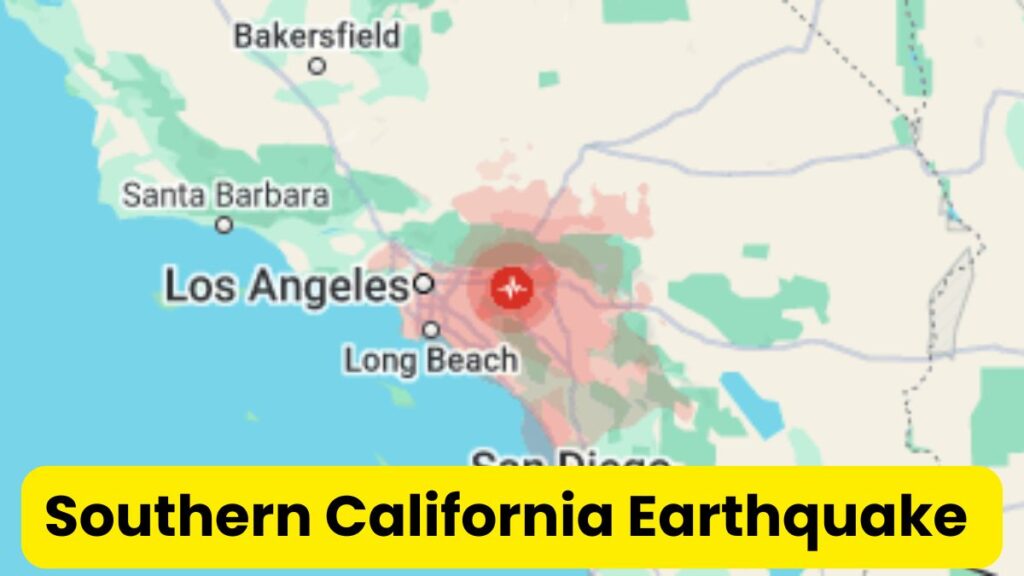On Sep 7, a magnitude 3.9 earthquake rattled Southern California, impacting areas near the U.S.-Mexico border. While not considered a major quake, it was significant enough to be felt across both countries, leaving residents in affected regions on edge. Here’s a closer look at what happened and how it impacted both the United States and Mexico.
The Southern California Earthquake Epicenter and Affected Areas
The earthquake occurred at approximately 11.34 pm with the epicenter located near Ontario close to the border between Southern California and Mexico. This region is known for its seismic activity, being part of the Pacific Ring of Fire, a hotspot for earthquakes and volcanic activity.
Residents in cities such as San Diego, California, and Tijuana, Mexico, reported feeling the tremors, though there have been no immediate reports of severe damage or injuries. The U.S. Geological Survey (USGS) confirmed the earthquake’s magnitude, classifying it as a minor earthquake on the seismic scale.
Impact on Southern California
Southern California, particularly the area around Los Angeles and San Diego, is no stranger to earthquakes. However, even minor tremors like this one can be unsettling, especially for residents who are aware of the potential for larger, more destructive quakes in the future. Fortunately, no major damage has been reported, although some buildings and infrastructure may have experienced light shaking.
Local emergency services were quick to respond, and precautionary measures were taken in some areas. Residents are reminded to stay prepared by securing furniture, having emergency kits ready, and knowing what to do in case of a stronger quake.
Mexico’s Response
On the Mexican side, cities like Tijuana and Mexicali also felt the shaking, though similarly to the U.S., no immediate damage or injuries were reported. The country’s National Seismological Service monitored the event closely, and local authorities ensured public safety protocols were in place.
Mexico, like Southern California, is accustomed to earthquakes, and its infrastructure is designed to withstand such events. However, earthquakes of any magnitude can still cause concern, especially in densely populated urban centers.
The Science Behind the Earthquake
Earthquakes are usually caused by the movement of tectonic plates beneath the Earth’s surface. Southern California and northern Mexico sit atop the San Andreas Fault, a major fault line that separates the Pacific and North American plates. As these plates shift and grind against each other, stress builds up, eventually releasing an earthquake.
A magnitude 3.9 earthquake is classified as “minor,” meaning it’s usually felt by people but rarely causes significant damage. However, such tremors are a reminder of the region’s seismic activity and the potential for larger, more dangerous quakes.
Preparedness in Earthquake-Prone Regions
Both the U.S. and Mexico are well-prepared for seismic activity, with protocols in place for both minor and major earthquakes. Authorities in Southern California and northern Mexico encourage residents to:
- Have an earthquake emergency plan
- Secure furniture and appliances to prevent injury
- Keep a supply of food, water, and medical supplies on hand
- Stay informed about earthquake alerts through official channels
The magnitude 3.9 earthquake that struck Southern California and Mexico is a reminder of the region’s seismic vulnerability. While this particular quake didn’t cause significant damage, it serves as a wake-up call for residents on both sides of the border to stay vigilant and prepared.
Seismic activity in the region is a natural part of life, but with the right precautions, residents can minimize risk and stay safe. As the event is monitored closely by geological experts, it’s important to remain informed and ready for any future developments.
Stay tuned for updates as we learn more about the ongoing seismic activity in Southern California and Mexico.
Sources:
- U.S. Geological Survey (USGS)
- National Seismological Service (Mexico)
